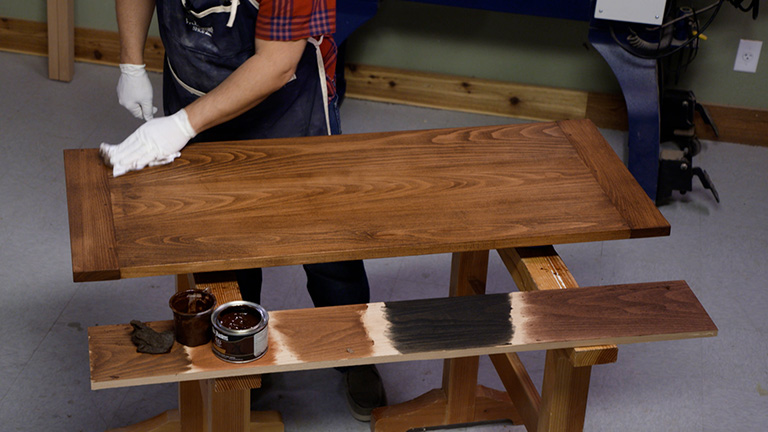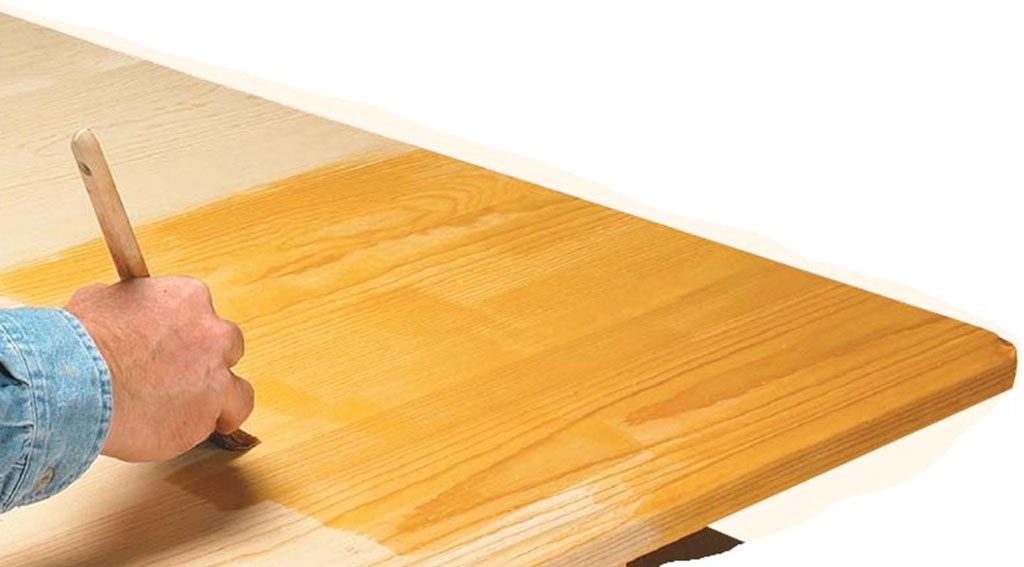 I used to think of a disk sander as a “luxury” tool — something that might be nice to own, yet not all that useful. But my thinking changed when I started working in a shop that had a disk sander. I soon found myself turning to this tool on a regular basis. It’s fast, easy to use, and excels at a range of tasks.
I used to think of a disk sander as a “luxury” tool — something that might be nice to own, yet not all that useful. But my thinking changed when I started working in a shop that had a disk sander. I soon found myself turning to this tool on a regular basis. It’s fast, easy to use, and excels at a range of tasks.
 BASICS.
A disk sander is a pretty simple tool. It’s nothing more than a flat sanding disk driven by a motor. But it’s the nature of the disk that makes this sander so useful. Unlike most other types of sanders, the hard, metal disk doesn’t flex or deflect in use. So you can sand right up to a line with extreme accuracy.
BASICS.
A disk sander is a pretty simple tool. It’s nothing more than a flat sanding disk driven by a motor. But it’s the nature of the disk that makes this sander so useful. Unlike most other types of sanders, the hard, metal disk doesn’t flex or deflect in use. So you can sand right up to a line with extreme accuracy.
Most disk sanders have a cast iron or steel table in front of the disk with a slot for a miter gauge. The table can typically be tilted up to 45° from the face of the disk to allow you to sand bevels.
Disk sanders range in size from small, hobby machines with 4"-dia. disks to industrial, 36"-dia. giants. For the home shop, 12"dia. is a pretty common size. You can even purchase a disk that allows you to turn your table saw into a sander.
Sanding disks are available in just about any grit you need. Most sanding disks sold today are the PSA (pressuresensitive adhesive) type, so it only takes a minute or two to peel off the old disk and slap on a new one.
USING A DISK SANDER. There’s really not much to using a disk sander. It’s probably one of the simplest tools to operate. As with any abrasive tool, you’ll want to make sure to wear proper eye protection. And to keep the workpiece resting securely on the table, you always want to use the half of the disk that is traveling downward. (Note: Not all disk sanders rotate in the same direction.)

BURNING. One thing to watch out for when using a disk sander is burning. Because the disk is spinning at a high rate of speed (particularly near the edge of the disk), the friction can burn the workpiece. Use a light touch and make sure that you keep the sanding disk clean so it doesn’t get loaded up with sawdust. If you experience burning, try moving the workpiece in closer to the center of the disk, where the speed is lower.
APPLICATIONS
A disk sander is a versatile tool. The high travel speed of the disk makes it great for quickly hogging off material and shaping parts. But it can also be used for accurate, precise sanding as well.

MITER JOINTS.
One of the most useful tasks I use the disk sander for is fine-tuning miter joints. No matter how carefully you set up your table saw or miter saw when cutting miter joints, it’s pretty common to have to take off just a hair at either the heel or the toe of the joint to get a good fit. With a disk sander, this is an easy task.

You can either tilt the table of the sander, or use a miter gauge to help “tweak” the fit of the joint. For making mitered frames, I find it an invaluable tool.
CIRCLES. It’s hard to think of a better or faster tool for shaping circles. Using a simple jig, you can create perfectly sized circles in a matter of minutes. Start by laying out the circle on your blank and drilling a small pilot hole in the center. Next, rough out the circle on the band saw, staying just to the waste side of the line. To sand the circle to final size, place it over the pivot pin on the jig and slowly rotate it against the spinning sanding disk.

CURVES. A disk sander is also great for sanding convex curves, such as a radius on the corner of a workpiece. I do this freehand, laying out the radius on the workpiece and then pivoting the workpiece against the disk in two or three passes, sanding down to the layout line.

CHAMFERS. Chamfering the end of a workpiece, such as a leg or a through-tenon for a piece of Craftsman-style furniture, is a perfect job for a disk sander. You can set the miter gauge to 45° and simply advance the workpiece into the disk to sand a chamfer on each edge. And unlike using a router, you don’t have to worry about tearout.
I’ll admit that a disk sander doesn’t fall into the category of “must-have” tools. But if you’ve got the space in your shop for one and your budget allows, it’s definitely a tool worth owning.
Option: Table Saw Disk Sander
 You don’t have to purchase a disk sander to get the benefits of owning one. A couple of manufacturers make 10"-dia. sanding disks that can be installed in place of the blade on your table saw, allowing you to use it as a disk sander.
You don’t have to purchase a disk sander to get the benefits of owning one. A couple of manufacturers make 10"-dia. sanding disks that can be installed in place of the blade on your table saw, allowing you to use it as a disk sander.
The Freud sanding disk shown in the photo at above also doubles as a calibration disk. It provides a flat reference surface that comes in handy when adjusting and tuning up your table saw.












